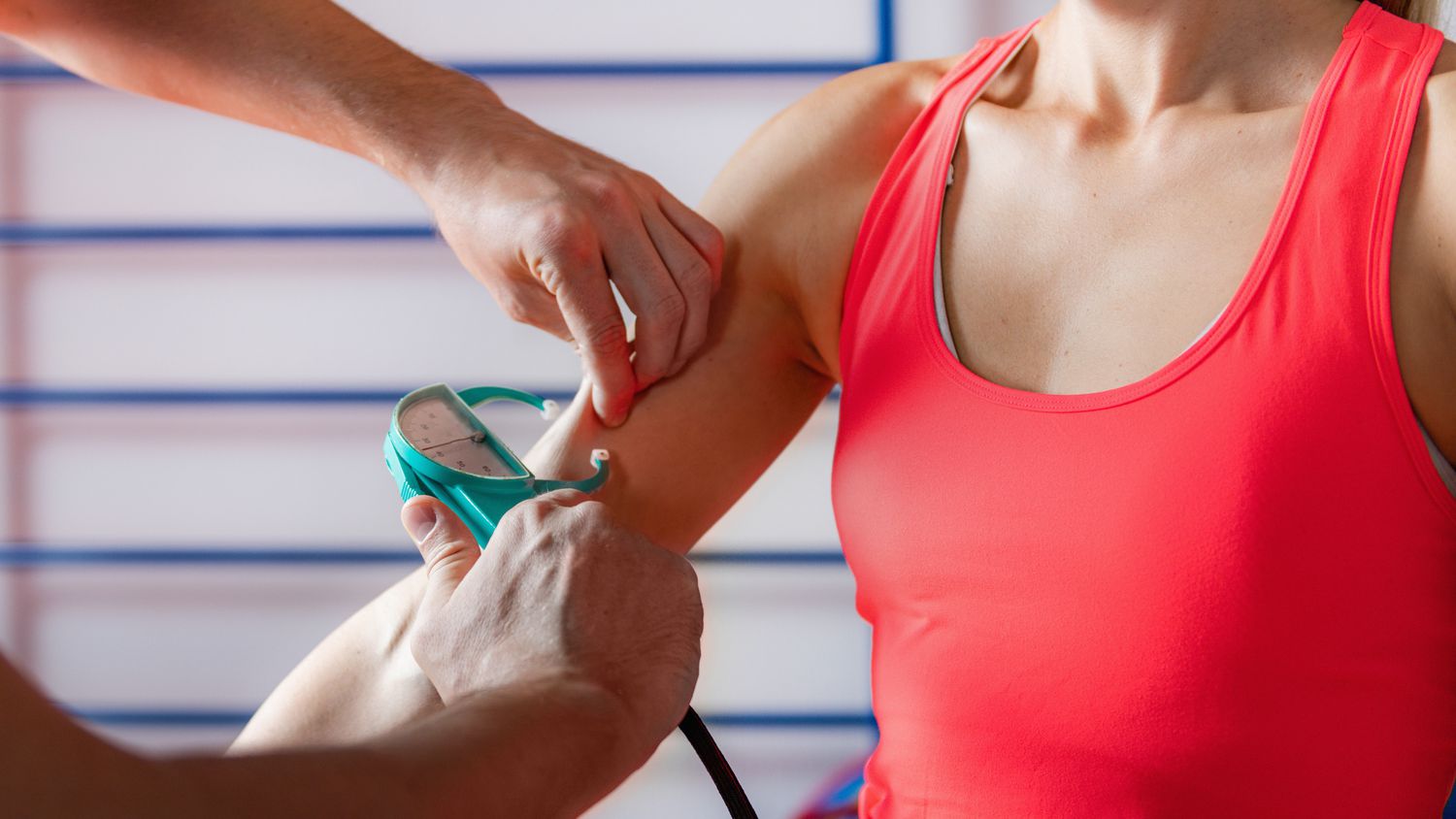Comparing BMI and Body Fat Percentage: Which Measure Is More Effective for Health Assessment?

It may be beneficial to look beyond your body mass index (BMI) and consider your body fat percentage to get a clearer picture of your health. BMI, which assesses a person's weight relative to their height, has long been used as a quick health measure, but it can be misleading.
"BMI is often the starting point for gathering additional health data," said Claire Edgemon, RD, a senior registered dietitian at Baylor College of Medicine. "Since BMI only considers height and weight, people with high muscle mass, such as athletes, may have a BMI indicating they are overweight."
In such cases, determining your body fat percentage, which specifies what portion of your weight is fat, can offer useful information. "We want to ensure that someone tagged as overweight based on their BMI is indeed overweight,” said Edgemon. "Body fat percentage is an additional measure that can help ascertain a person's health status, and the more data we have, the more precise our evaluation can be."
Here’s more on how your body fat percentage can help you gauge your overall health status, how to calculate it, and what else to consider when evaluating your health.
Body fat percentage is a measure of the proportion of your weight derived from fat, contrasting with your bone density, muscle mass, and the weight of internal organs. It can offer deeper insights into your overall health and disease risk.
Although a person's body fat percentage differs from their BMI—a measure based on height and weight—using both methods together can provide a more accurate overview of a person's overall health.
However, using only BMI to assess health has drawn criticism recently for being potentially misleading and harmful. Viewing these two measurements together and understanding that they are rough estimates can be more beneficial.
"Different [measurement] techniques may yield different outcomes," Daniel Fulham O’Neill, MD, EdD, FAAOS, ABOS, a sports medicine physician at The Alpine Clinic in New Hampshire, pointed out.
"If [a person] falls into a BMI or [body fat percentage] category considerably above or below the average, that could be a warning sign of potential health problems;" stated O’Neill. He elaborated that there are many health indicators, such as the level of physical activity, stress, and sleep habits.
“A high BMI or body fat percentage can lead to various health issues,” O’Neill warned, citing high blood pressure, high cholesterol, diabetes, heart disease, and an increased risk of many cancers. The World Health Organization links obesity with particular cancers including those of the endometrium, breast, ovary, prostate, liver, gall bladder, kidney, and colon.
"Depression and other psychological issues have also been associated with obesity," O’Neill cautioned. Research from 2020 found obesity increases the risk of depression, especially in women.
Edgemon highlighted that abdominal obesity heightens risks for fatty liver disease, metabolic syndrome, breathing issues, kidney problems, gallbladder problems, pancreatic problems, and osteoarthritis among others.
Yet, body fat is essential to a certain degree, “We have body fat ranges for men and women considering age, athletic condition, fitness level, acceptable level, and obese level,” clarified Edgemon.
O’Neill revealed that on average, an acceptable body fat percentage is around or under 25%. Biologically, women generally carry higher body fat due to reproductive needs.
Generally speaking, a healthy or acceptable body fat percentage for the average male ranges from 18–24%, and for females, it's between 25–31%. Physically fit individuals and athletes will likely have a lower body fat percentage. Any value above the acceptable range is considered obese, however, these are averages and don’t take into account individuals' attributes like age or ethnicity.
On the other hand, body fat percentages below the essential boundaries, which are 2–5% for men and 10–13% for women, may have negative health implications or signal underlying health concerns that require medical attention.
If you're interested in finding out your body fat percentage, several methods exist—some easier to access than others.
"The most precise methods to calculate body fat are a DEXA (dual-energy X-ray absorptiometry) scan or underwater weighing," Edgemon suggested.
DEXA scans measure body components that make up a person’s total body composition. This includes bone density, fat mass, and fat-free mass (muscles and organs). “It is often used to determine bone density or osteoporosis,” she said, adding that “underwater weighing requires being submerged 3 times and expelling all air.”
Though they are the most accurate ways to calculate body fat percentage, they’re also expensive and not always accessible.
“Other methods include skinfold measures using calipers, waist circumference measurement, waist-to-hip ratio (WHR), bioelectric impedance, and air displacement,” said Edgemon.
Research published in JAMA Network Open suggests that WHR may be more accurate than body mass index (BMI) in predicting associated health conditions.
To find your WHR, measure the waist at the smallest part (belly button, usually) and then the hip at the widest part, she said. “Ideally, the waist should be smaller than the hips.”
A WHR for men of at least 0.9 indicates abdominal obesity, for women, it’s at least 0.85.
O’Neill said your body fat percentage (and BMI) can be found simply by going to Calculator.net or many other sites and just putting in your information.
Keep in mind, however, that these measurements can only show you one part of your overall health. According to O’Neill, it’s best to also consider your blood pressure, weight, cholesterol, and other numbers for a broader look.
It’s also important to notice the trends of these measurements—so you can determine the direction your body is going in over time—and not rely on a singular reading. “Having some quantification can be useful to measure trends,” said O’Neill.
“Trying to ‘control’ or make significant changes in your body fat is a big ask,” said O’Neill. “You have no control over your genetics, or age, or the past years of not moving enough and eating poorly.”
“The real goal is getting off diabetes and cholesterol meds,” he added. “[As well as] having more fun on your holiday because you have more energy to tour the sites; having a tired puppy dog after a long walk in the park, et cetera.”
As adults, O’Neill said the easiest way we can gain control of our weight, but more importantly, health, is to reignite that physical identity we had in childhood. He explained physical identity is a child’s natural inclination to run, to explore, to engage with the outside world.
Edgemon agreed that physical activity, including both cardio and weight training, are good strategies for maintaining or reaching a healthy body fat percentage.
She also suggested staying within calorie recommendations to avoid excess fat storage and eating a “healthy” diet which means lots of fruits, vegetables, whole grains, lean meats, and dairy.




